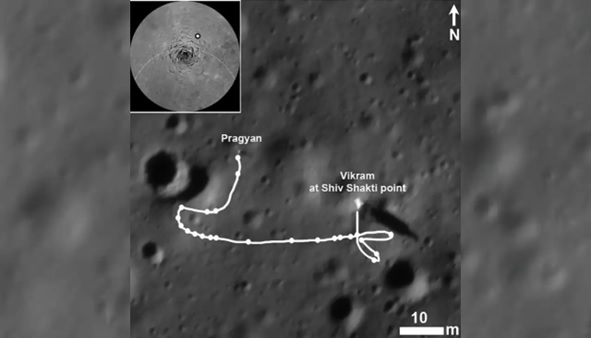Primitive Lunar Mantle Traces Uncovered by Chandrayaan-3 in Moon’s South Polar Region
In a significant leap for planetary science, researchers from the Physical Research Laboratory (PRL), Ahmedabad, have reported the detection of primitive lunar mantle material at the Chandrayaan-3 landing site, Shiv Shakti Point. Using the Alpha Particle X-ray Spectrometer (APXS) aboard the Pragyan rover, scientists measured elemental compositions of the lunar soil near the Moon’s south pole. Their analysis revealed an unusual depletion of sodium and potassium, along with enrichment of sulfur—findings distinct from earlier Apollo and Luna mission data.

These anomalies suggest the presence of ancient mantle material, likely excavated during the formation of the South Pole–Aitken (SPA) basin around 4.3 billion years ago. Unlike previous assumptions, the absence of KREEP (Potassium, Rare Earth Elements, and Phosphorus) components points to a pre-KREEP origin of this site’s material. This discovery, published in Nature Communications Earth and Environment, strengthens the case for the lunar magma ocean hypothesis and positions the Chandrayaan-3 site as a prime target for future sample-return missions aimed at understanding the Moon’s deep interior and early evolution.
The APXS instrument, developed by PRL under the Department of Space, exemplifies India’s growing capability in in-situ planetary science.
Source: https://www.isro.gov.in/Ch3_APXS_volatile_measurements.html